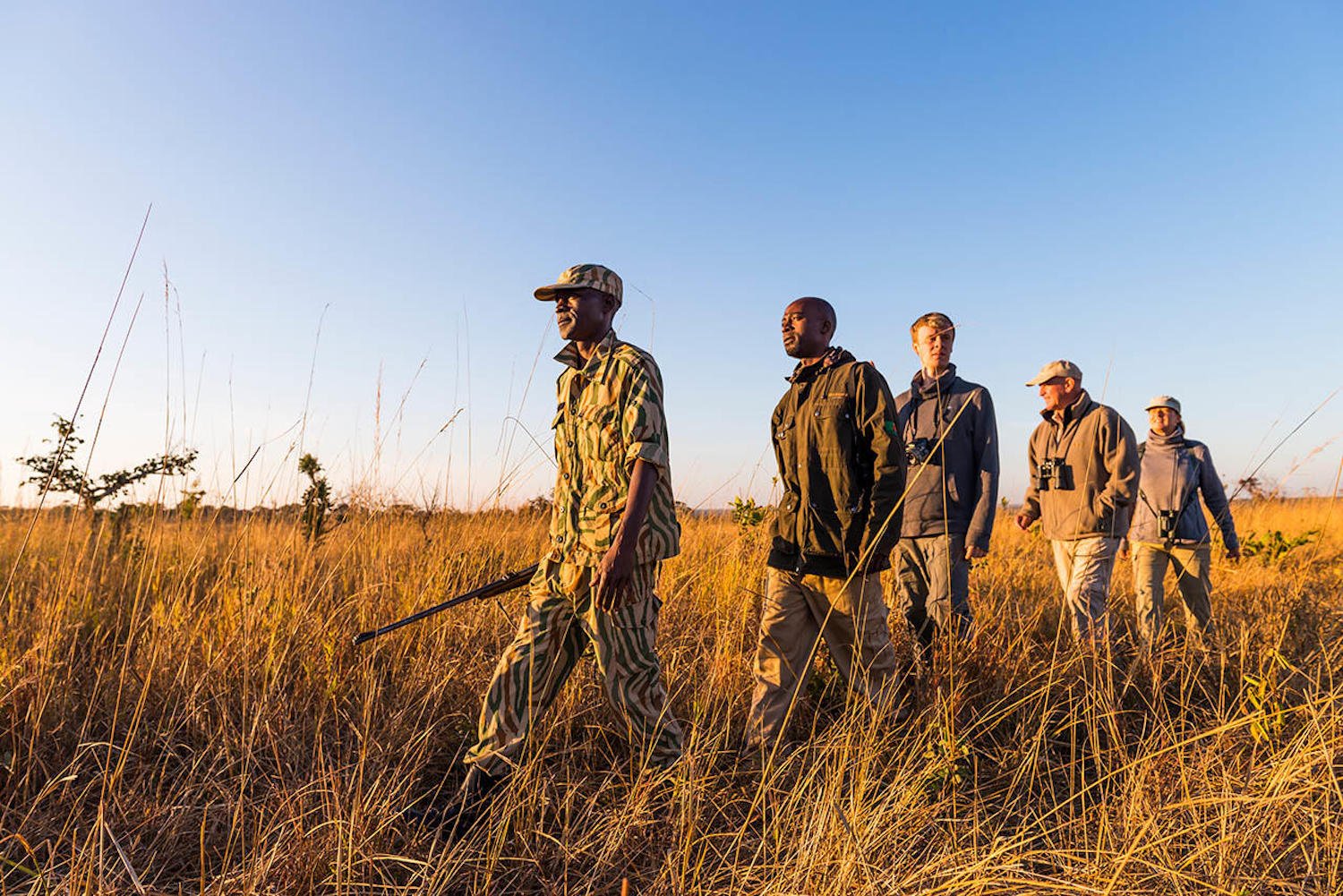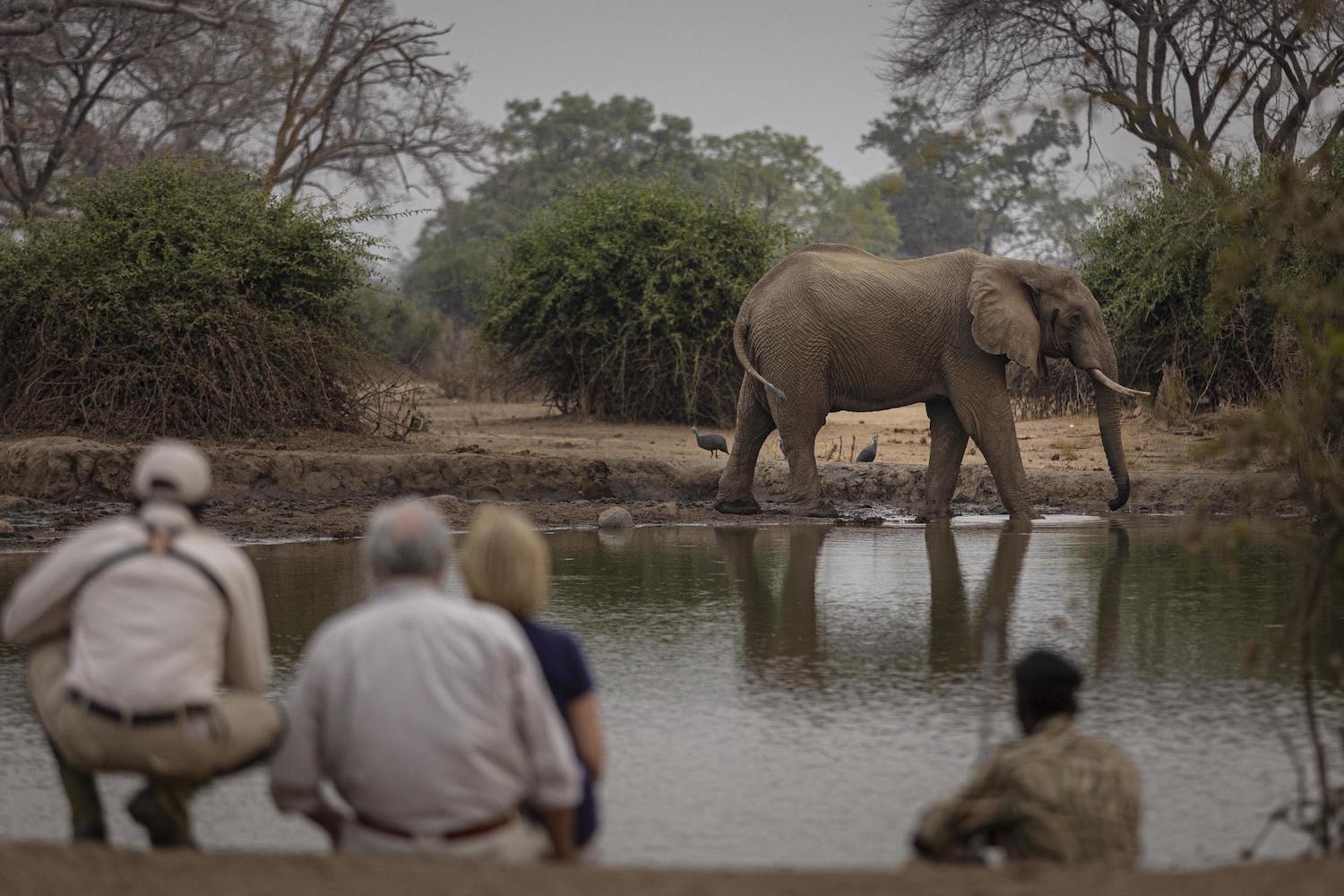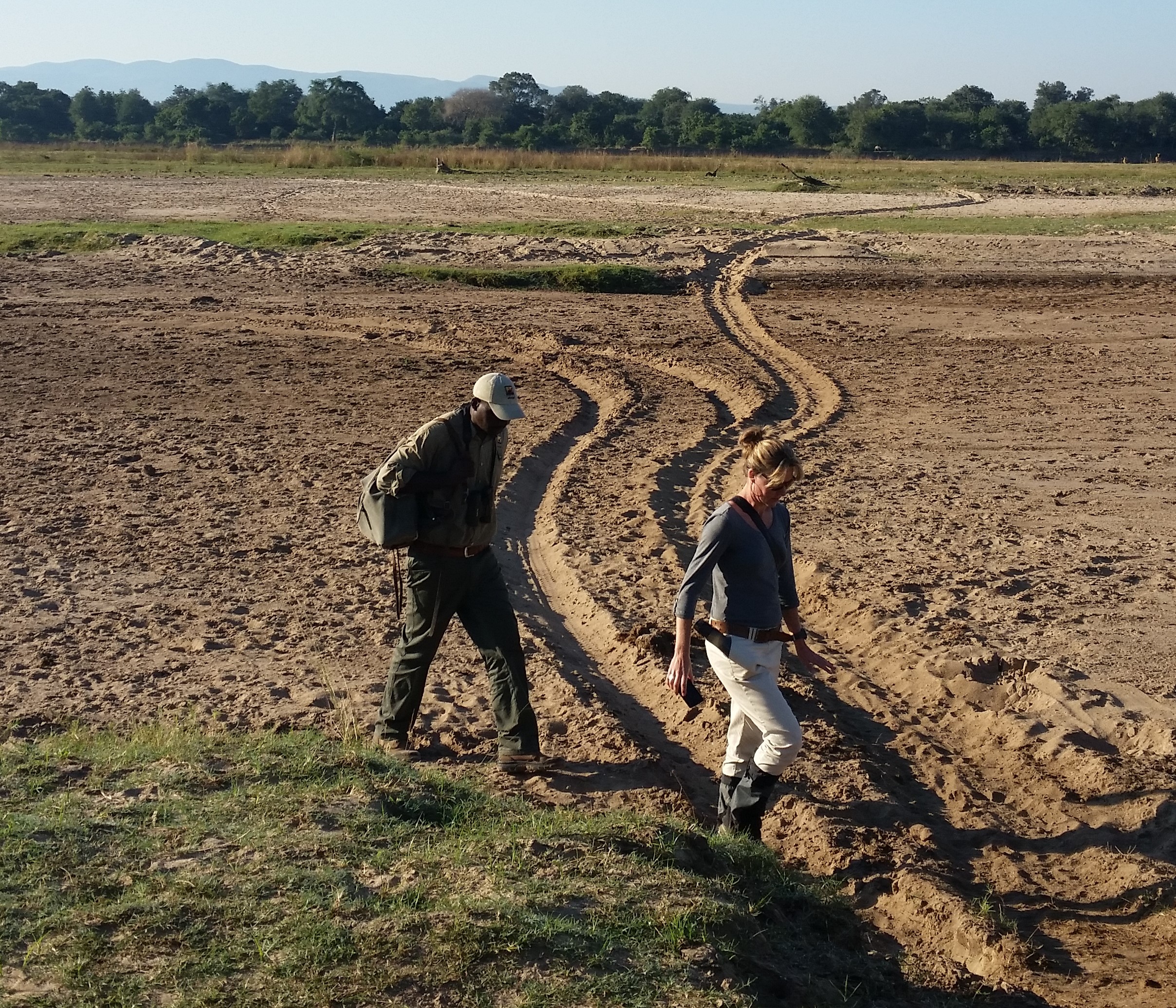WHAT TO PACK FOR A WALKING SAFARI
True walking safaris offer a unique perspective. Once, every human simply walked through wilderness areas and among throngs of wildlife. Leaving the vehicle behind reconnects you with a primal and fulfilling way of seeing the world on foot.

What’s covered in this guide
Explore the highlights of this post with ease by using the table of contents below to navigate to sections of interest.
What is the difference between a walking safari and a nature walk?
A walking safari entails spending the cooler parts of the day (early morning and late afternoon) either walking for several hours around your camp or walking to a new camp, with a break for lunch and siesta. You are doing considerable mileage on foot out in the bush with a qualified walking guide and an armed parks ranger.
Because you’re out for much of the day, you could encounter large game including predators. Your guide and ranger will always ensure your safety.
A nature walk is generally a short (about two hours or less) morning walk around the lodge with a guide and sometimes an armed ranger. You will venture out to see the smaller things – flowers, insects, birds, rodents and so on – that are often missed when on a game-drive vehicle.
Do I need a full backpack for a walking safari?
No, the camp staff will ensure your main bag is taken to the next camp as planned (all waking safaris have back-up vehicles in case of emergency). All you need is a daypack that can carry your personal items such as a camera, binoculars, sunscreen and water.
A walking safari is similar to slackpacking in which your pack, meals, accommodation and ablutions are all taken care of or provided for you.

Blending in the key to getting amazing sightings on foot. Take inspiration from guides and opt for dull colours and natural fabrics.
How to be comfortable and safe on your walking safari
- Dress to blend in, not stand out. This means the colours of nature like greens, greys, browns and khakis. Although white is ‘cool’, it is too high-contrast and will make you stand out too much. Blacks and blues attract tsetse flies and bright colours such as reds and oranges make you too visible. Conventional hiking clothes in bright hues are not suitable – aim for dull tones. Hikers need to stand out, safari walkers should blend in.
- Do not wear camouflage or animal print. In many African countries, only enlisted soldiers and qualified rangers are legally allowed to wear camouflage (as your ranger will likely do to differentiate themself from your guide). Animal print is also potentially dangerous: a zebra print could attract a predator; a leopard print could trigger alarm calls from baboons or impala.
- Wear trousers and a long-sleeved shirt. Yes, it’s hot but ‘longs’ in pale colours and natural fibres will prevent you from getting sunburnt, bitten by insects or snagging your skin on branches and thorns. Shorts are a recipe for emerging with bites and scratches on your legs that could be itchy and need anti-inflammatories.
- Proper boots and gaiters are a must. Trainers or sneakers won’t cut it: your feet need excellent support and material sturdy enough to deal with rocky ground. Gaiters prevent dust, pebbles and general grit getting into your boots – they are also great protection against insect bites (and the highly unlikely event of a snake bite).
- A hat and sunglasses are mandatory. The African sun is strong with considerable glare. A wide-brimmed hat and polarised sunglasses are essential.
- Sunscreen is vital. Cover all exposed skin – even ears – with high SPF sunscreen (ideally organic and with an insect repellent as part of its make-up). Your neck, hands and chest are all prone to searing sunburn.
- ‘Pole, pole. Sip, sip’. ‘Slowly, slowly. Drink, drink.’ A walking safari is not a speed walk. Your guide will keep a very manageable pace with frequent breaks to ensure your safety at all times. Be sure to keep hydrated and take frequent sips of water.
- Back to basics. Strip away anything superfluous like jewellery, perfume and make-up. The simpler your morning routine and the fewer ‘things’ you have to deal with, the better. Strong scents from deodorants or aftershaves are discouraged. Animals have a strongly developed sense of smell and will pick up unusual ones, generally making them shy away from anything they don’t recognize, which will impact your sightings.
- Layer up. Walking safaris generally take place in peak or dry season when the grass is at its shortest (for better visibility) and there’s less chance of rain. This means early mornings can be chilly until you warm up. If you are fly-camping, then nights can also be cold (your full pack will be waiting for you when you get to your overnight stop).

Dress in layers and have sturdy footwear, trousers and good protection against the sun. Note only park rangers (right) may wear camouflage.
Should I take trekking poles?
While trekking poles can be useful for stability, a walking safari is not a trek or a hike. For safety, you will be walking in single file behind your guide, generally at a very moderate pace with stops to examine interesting fauna and flora. It is unlikely you will reach a pace where you can get into a steady rhythm with trekking poles and they might interfere with other walkers’ strides. If the guide asks you not to use your poles, please obey them.
PHOTO CREDITS Mukambi Safaris and Royal Zambezi Lodge








